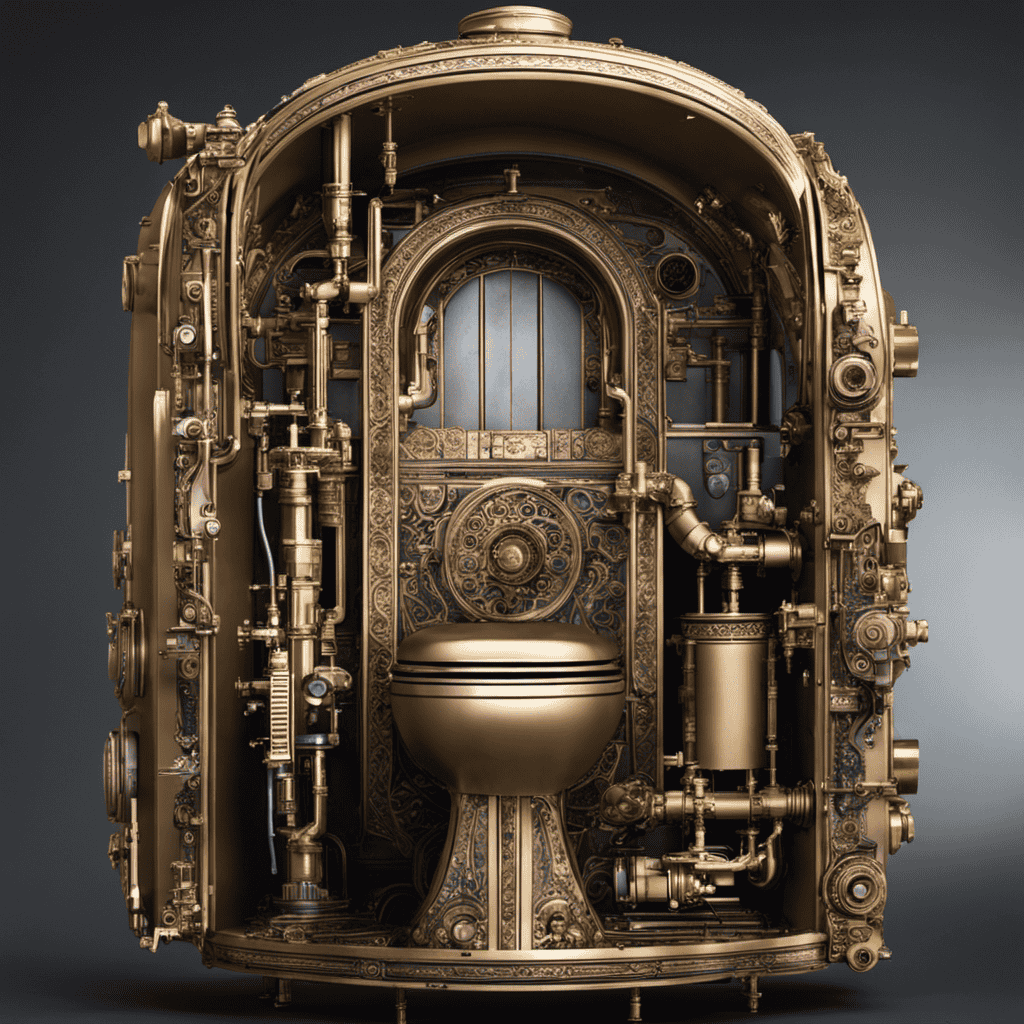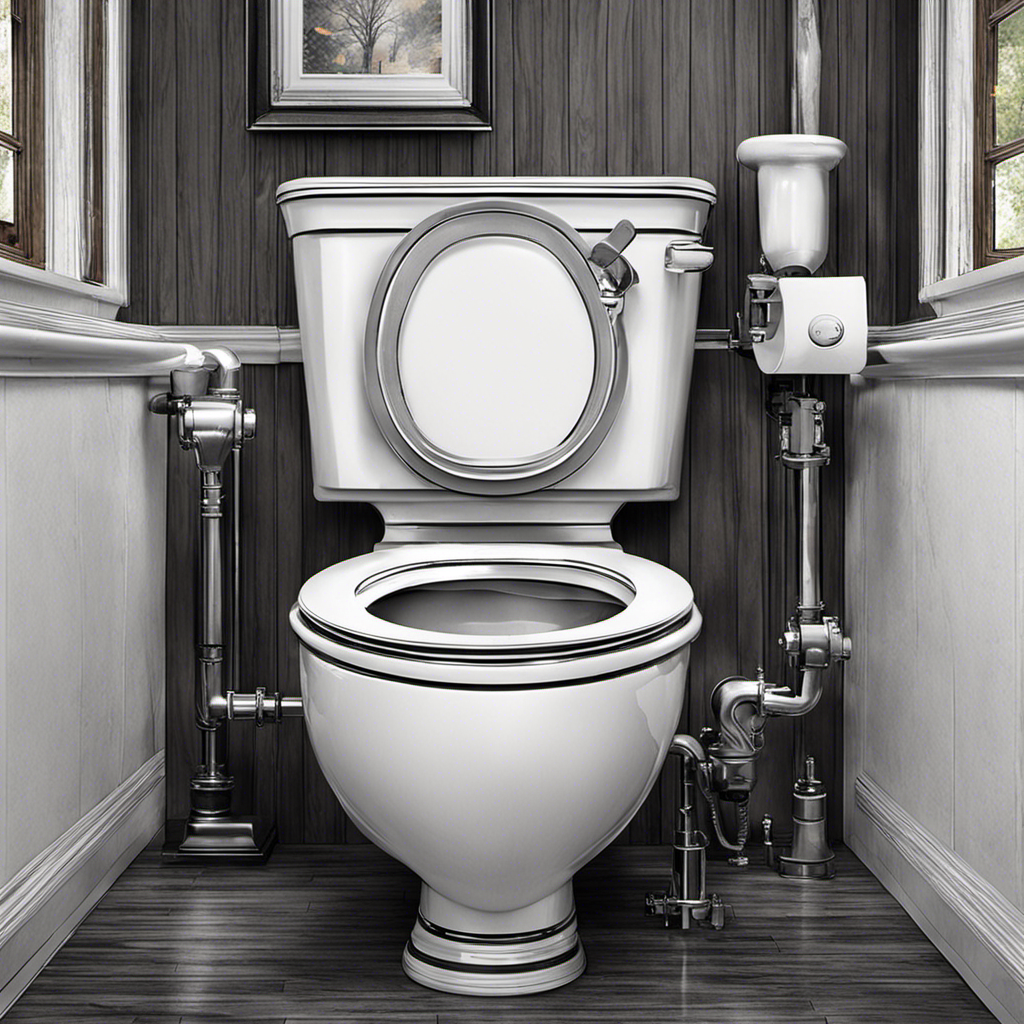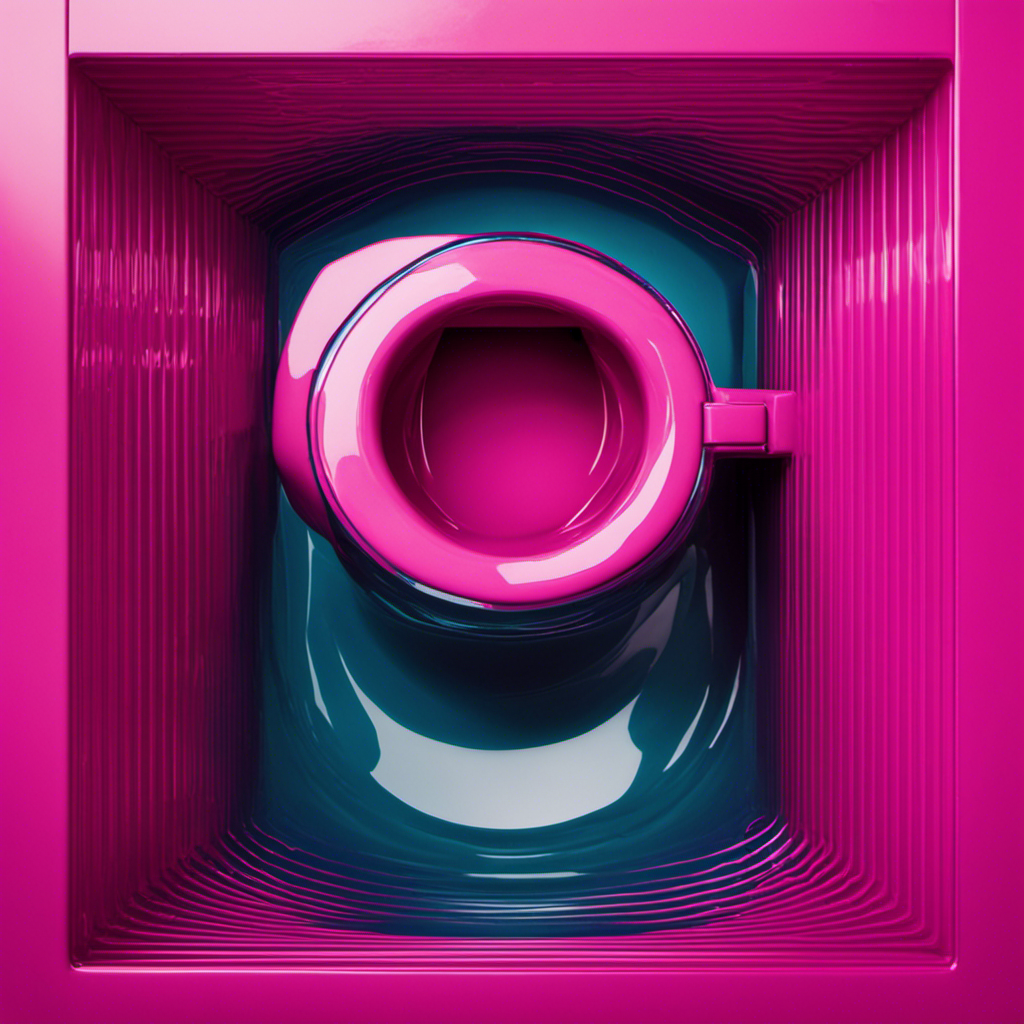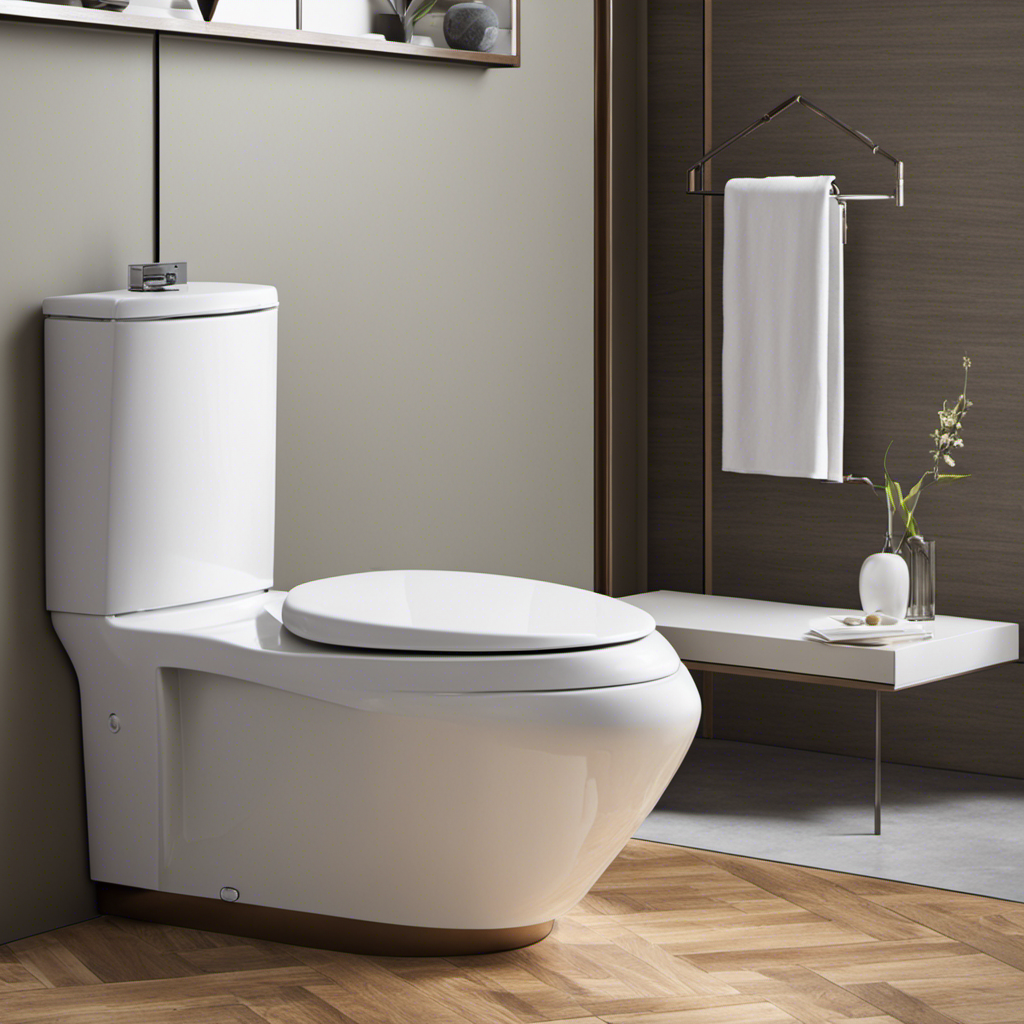As a plumbing professional, I find the fascinating world of toilet fill valves to be quite intriguing. These essential components play a pivotal role in the proper functioning of our beloved porcelain thrones.
But what exactly is a toilet fill valve? Well, my friends, let me enlighten you. A toilet fill valve is a clever contraption that controls the flow of water into the toilet tank, ensuring a swift and efficient flush.
So, join me on this educational journey as we explore the inner workings of these unsung heroes of the bathroom realm.
Key Takeaways
- Toilet fill valves are important for controlling water flow and refilling the toilet tank efficiently.
- There are different types of toilet fill valves available in the market to address specific issues.
- Choosing the right type of fill valve is crucial for optimal performance.
- Signs of a faulty fill valve include overflowing tank, continuous water running, weak or no water flow, loud noises during filling process, and inconsistent water levels in the tank.
Importance of a Toilet Fill Valve
Toilet fill valves are important because they control the water flow and help refill your toilet tank efficiently. When it comes to common problems with a toilet fill valve, one of the main issues is a faulty valve that leads to continuous water running or an inability to fill the tank properly. This can result in wasted water and higher water bills.
Thankfully, there are different types of toilet fill valves available in the market to address these issues. Some popular options include the ballcock fill valve, the float cup fill valve, and the pressure-assisted fill valve. Each type has its own advantages and disadvantages, so it’s important to choose the one that suits your needs.
Now, let’s explore how does a toilet fill valve work.
How Does a Toilet Fill Valve Work
The way a toilet fill valve operates is by regulating the flow of water into the tank. It is an essential component of a toilet’s flushing system, ensuring that the tank is filled with the correct amount of water after each flush. Understanding the different parts and types of toilet fill valves can help troubleshoot any issues and ensure optimal performance.
Here are four key aspects to consider:
-
Float Ball or Cup: This mechanism detects the water level in the tank and signals the fill valve to stop the flow when the tank is full.
-
Diaphragm or Piston: These are the main working components of the fill valve, controlling the flow of water based on the float’s position.
-
Inlet Tube: This tube connects the fill valve to the water supply line, allowing water to enter the tank.
-
Adjustable Water Level: Some fill valves allow you to adjust the water level in the tank, giving you control over the flushing efficiency and water usage.
Understanding the different parts and types of toilet fill valves can help you maintain a properly functioning toilet and avoid any potential issues.
Signs of a Faulty Toilet Fill Valve
One way to identify a faulty toilet fill valve is if your tank consistently overflows after flushing. This is a common problem that many homeowners face with their toilets. Fortunately, there are troubleshooting techniques that can help you pinpoint and fix the issue.
To assist you further, I have provided a table below that outlines some common problems associated with a faulty toilet fill valve and their corresponding troubleshooting techniques:
| Common Problem | Troubleshooting Technique |
|---|---|
| Tank consistently overflows | Adjust the float arm or replace the fill valve |
| Water continuously running | Check for leaks and adjust the fill valve |
| Weak or no water flow | Clean or replace the fill valve or check for clogs in the water supply line |
| Loud noises during filling process | Tighten loose fittings or replace worn-out components |
| Inconsistent water levels in the tank | Adjust the float arm or replace the fill valve |
Steps to Replace a Toilet Fill Valve
To replace a faulty toilet fill valve, you’ll need a few basic tools and a new valve from your local hardware store. Here are the steps to follow:
-
Shut off the water supply: Locate the shut-off valve behind the toilet and turn it clockwise to stop the water flow.
-
Drain the tank: Flush the toilet and hold down the handle until the tank is empty.
-
Remove the old valve: Disconnect the water supply line and unscrew the nut holding the fill valve in place. Lift the old valve out of the tank.
-
Install the new valve: Place the new valve in the tank and secure it with the nut. Reconnect the water supply line and turn on the water.
Troubleshooting and replacing a faulty toilet fill valve can save you from constant leaks and water wastage. A new fill valve offers benefits such as improved water efficiency, reduced noise during refills, and a reliable water flow for optimal flushing performance.
Don’t hesitate to replace a faulty fill valve to ensure a properly functioning toilet system.
Maintenance Tips for a Toilet Fill Valve
Regular maintenance is essential for ensuring the optimal performance and longevity of your toilet’s fill valve. As a homeowner, it’s important to be aware of common toilet fill valve problems and how to troubleshoot them.
One common issue is a noisy fill valve, which can be caused by a buildup of sediment or a faulty valve. To troubleshoot, start by turning off the water supply and flushing the toilet to drain the tank. Then, remove the fill valve cap and clean any debris.
Another problem is a running toilet, which can be caused by a flapper that doesn’t seal properly or a faulty fill valve. To fix this, adjust the water level or replace the faulty component.
Conclusion
In conclusion, the toilet fill valve is a crucial component of any toilet system. It is responsible for regulating the water level in the toilet tank and ensuring proper flushing.
By understanding how it works and being aware of the signs of a faulty valve, you can prevent potential water wastage and costly repairs.
Remember, a well-maintained toilet fill valve is like a well-oiled machine – it keeps things running smoothly and avoids any unwanted leaks or overflow.
So take care of your fill valve, and your toilet will thank you!










